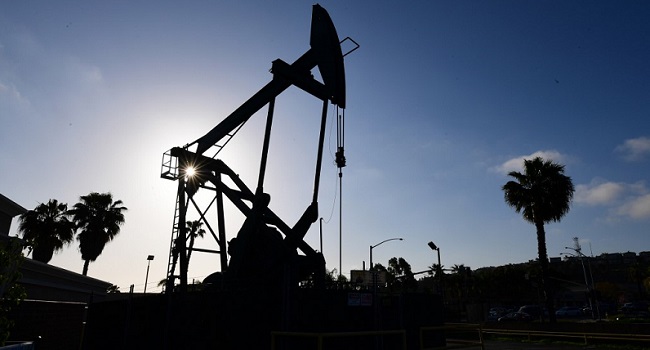Oil-price turmoil gripped traders once more Tuesday, as the coronavirus crisis crippled global energy demand and worsened a supply glut, coming a day after US crude futures crashed below zero for the first time.

Negative prices mean traders must pay to find buyers to take physical possession of the oil — a job made difficult with the world’s storage capacity at bursting point.
Storage is a particularly big problem in the US where WTI oil is delivered at a single, inland point. In Europe, where Brent is the benchmark, there are several such points and their proximity to the sea allows some of it to be stored on tankers.
This week’s massive sell-off came ahead of Tuesday’s expiry of the May contract. Most trading has now moved to the June contract, and May WTI was back in positive territory by the late European afternoon.
– ‘Slice of pizza’ –
“Ever thought that it could be imaginable to see the price of US oil valued at less than a pizza? Or even a slice of pizza? How about for it to actually cost to sell US crude?” said Jameel Ahmad, head of currency strategy and market research at FXTM.
“All of this was previously thought to be unthinkable — but it became very real for traders as the price of US oil turned negative for the first time in history.”
European benchmark Brent North Sea oil for June delivery tumbled to an 18-year low, before coming off worst levels in volatile deals.
“Players are now paying buyers to take oil volumes away as the physical storage limit will be reached. And they are paying top dollar,” said Rystad Energy analyst Louise Dickson.
Oil markets have been ravaged this year after the pandemic was compounded by a price war between Saudi Arabia and Russia.
While the two big oil producing nations have drawn a line under the dispute and agreed with other countries to slash output by almost 10 million barrels a day, that is not enough to offset the lack of demand.
– Stock markets sink –
Equity markets were meanwhile also deep in the red on Tuesday, having enjoyed a healthy couple of weeks thanks to massive stimulus measures and signs of an easing in the rate of new infections globally.
Key eurozone stocks markets closed with declines of up to four percent, while London did a little better thanks to a weaker pound.
On Wall Street, the DJIA was over 600 points down by the late New York morning.
“Continued dysfunction in the crude oil markets” was the main factor behind the decline, analysts at Charles Schwab said, “while the Street continues to assess the timing of when the US economy may be able to reopen”.
Analysts warned the drop in stock markets could be an indication that the recent surge may have been hasty, and that another prolonged sell-off is possible.
Source: AFP

















